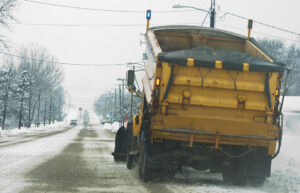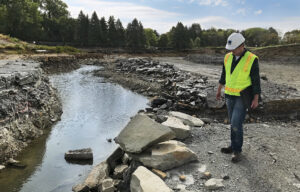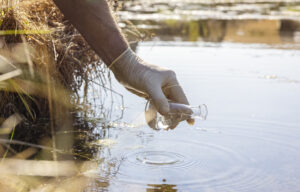 When soil samples contain many contaminants, Barr uses multivariate analysis to help clients answer complex questions about data.
When soil samples contain many contaminants, Barr uses multivariate analysis to help clients answer complex questions about data.
Statistics unlock answers to contamination questions
At environmental investigation sites, determining the source of contamination can be a key step in mitigating risks and assigning responsible parties. But this can be difficult when samples contain numerous relevant contaminants. Barr’s data science team uses multivariate analysis (MVA) to help our clients answer questions involving complex data, including source delineation.
MVA is set of statistical techniques that group samples with similar chemical characteristics. Once groupings are identified, our GIS team can plot the spatial relationships to suggest which samples came from similar sources. These techniques can be applied to specific groups of compounds or to general water quality parameters like cation and anion ratios.
Barr recently used MVA to help an industrial client implicated in the deposition of PFAS across a broad area of land near one of their New England facilities. Per- and polyfluoroalkyl substances (PFAS) are a group of chemicals used in many industrial processes, firefighting foams, and other consumer products. This class of chemicals is widespread and persistent in the environment, making source delineation difficult.
By using MVA, Barr was able to identify four different classes of PFAS mixtures in the many samples collected in the area. When plotted on a map, patterns emerged that argued our client was not exclusively responsible for local PFAS contamination. The use of MVA helped the client make a successful argument limiting their responsibility for the PFAS found in the region.
Interested in learning more about Barr's data science services? Contact our team.
About the author
Ali Ling, former environmental engineer at Barr, worked primarily on projects related to water and wastewater treatment, environmental microbiology, and water chemistry. She provided wastewater engineering support, assisted with wastewater permitting, and conducted vapor intrusion studies and bench-scale water treatment studies. Ali’s project work at Barr included designing and executing bench-scale and pilot-scale tests to evaluate options for water and wastewater treatment and modeling water quality, flows, and costs associated with wastewater treatment processes.










